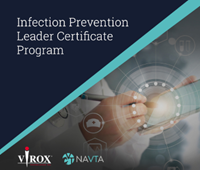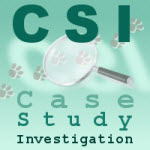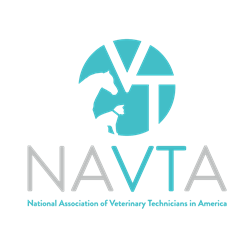|
| |
 |
|
Advances in Cell Based Therapies for Arthritis and More
For decades, cellular therapy has been utilized to promote healing and pain control in an effort to avoid a polypharmacy approach and to improve quality of life. This free-RACE approved, course explores the cutting-edge field of regenerative medicine within veterinary practice, specifically focusing on platelet-rich plasma (PRP) and stem cell therapy. It outlines fundamental mechanisms of action along with preparation, dosing, and application considerations for each treatment. The benefit and safety considerations of allogeneic PRP vs. autologous PRP is discussed. The course also includes a case study and relevant data to demonstrate how PRP and stem cells work synergistically.
Advances in Cell Based Therapies for Arthritis and More
|
| |
|
|
| |
 |
|
Infection Prevention Leader Certificate Program
Infectious Disease Control. The importance of strong prevention and cleaning protocols cannot be overstated. Virox® and NAVTA are pleased to offer this certificate program at no cost to members of the veterinary practice team.
The program consists of 4 individual RACE approved courses. Use the link to learn more about the program including links to the individual courses.
Infection Prevention Leader Certificate Program
|
| |
|
|
| |
 |
|
Wound Bed Preparation
This free course introduces utilizing the TIME acronym to implement wound bed preparation into your veterinary practice’s wound management protocol. It looks at the types of tissue debridement and the importance of proper moisture balance.
Based on a webinar presentation previously offered by Innovacyn. RACE approved for both vets and techs.
Wound Bed Preparation
|
| |
|
|
| |
 |
|
Neurological History and Exam Protocols of Dogs and Cats
Veterinary neurology, in general, is often a difficult and confusing topic for general practitioners. The basis of clinical neurology is lesion localization. Lesion localization can only be achieved with a good neurological examination and history. This RACE approved self-study course first focuses on how to obtain an accurate history from owners. Next it reviews how best to perform and interpret a neurological examination. Overall, this course helps participants develop their history-taking protocols and enhance their neurological examination skills.
Neurological History and Exam Protocols of Dogs and Cats
|
| |
|
|
| |
 |
|
VetTechnicalities: Triage
Evaluate the patient. Calm the clients. Notify the team. Treat the patient. Repeat! Veterinary technicians and nurses are the first responders in the ER, and triaging requires more than a brief once-over. This course covers every aspect of an ER veterinary triage, from input to intake, and informs you how to implement effective triage into your practice. Useful for general practices and specialty centers, via telemedicine and in-person. You won't just be reading a temperature; you will be reading the whole room.
Course is RACE approved for veterinary technicians/nurses.
VetTechnicalities: Triage
|
| |
|
|
| |
 |
|
A Day in the Life of a Dermatologist
This course examines the diagnosis, treatment, and client education of dermatological disorders of the dog and cat. It explores common and uncommon skin diseases such as pemphigus, discoid lupus erythematosus, systemic lupus erythematosus, erythema multiforme, Steven's Johnson syndrome/toxic epidermal necrolysis, and epitheliotropic lymphoma. Allergic dermatitis is rounds out the review.
RACE approved for both vets and techs.
A Day in the Life of a Dermatologist
|
| |
|
|
| |
 |
|
Emergency Stabilization for General Practitioners
This course provides general practitioners with a practical, stepwise approach to the assessment and stabilization of small animal emergency cases. Considerations for patient transfer to an emergency/specialty hospital as well as communication tips with emergency clinicians will be discussed. A case-based approach will be used to discuss common case presentations including trauma, respiratory distress, and blocked cats. A practical approach to fluid therapy, pain management, and other emergency treatments will be the focus of the reviewed in a case-based format. Key client communication points for common emergency presentations will be reviewed. Limitations of general practice in managing emergencies will be acknowledged. Course does not carry CE credits.
Emergency Stabilization for General Practitioners
|
| |
|
|
| |
 |
|
Managing Dermatology Cases in a Shelter Environment
This course examines some common dermatological conditions encountered in the shelter environment and their treatments. It also discusses how to handle public perception and how to properly house contagious and non-contagious conditions. Course does not carry credits.
Managing Dermatology Cases in a Shelter Environment
|
| |
|
|
| |
 |
|
Capnography: Monitoring in Thin Air
This course looks at both capnometric value and capnographic waveform. Blood gas analysis, leading into a discussion about pulse oximetry and its usefulness in patients who are ventilating in enriched oxygen environments, offers valuable insight into these important anesthesia monitoring components.
This course does not carry RACE credits.
Capnography: Monitoring in Thin Air
|
| |
|
|
| |
 |
|
Introduction to Oncology - Easy Peasy Basics
This course touches on the history of cancer and chemotherapy, as well as the modern use of chemotherapy in veterinary medicine. It looks at common chemotherapies used in veterinary medicine and their side effects, along with safe handling protocols. In addition, the course focuses on common oncological emergencies including hemangiosarcoma, osteosarcoma, mast cell tumors, and lymphoma. The presentation, diagnostics, treatment, and prognosis are discussed
Introduction to Oncology - Easy Peasy Basics
|
| |
|
|
| |
 |
|
Inside & Out - The Multi-Channel Communication
When you are tired of sharing your message that’s the moment it is just getting through to your audiences. People come to your practice with assumptions based on previous experiences. Set expectations with your team and your clients with constant consistent. This focus on messaging internally and externally will eliminate frustrations inside and out. During our session we will outline communication messaging, digital listen techniques and work through how to disseminate the same message to each audience across each channel online and off.
Course carries 1 credit for CVPMs.
Inside & Out - The Multi-Channel Communication
|
| |
|
|
| |
 |
|
Unions in Veterinary Medicine
Unions are in the news due to high-profile campaigns at Amazon and Starbucks. Support for organizing and unions is at an all-time high. In this course the president of the National Veterinary Professionals Union, a labor union dedicated to organizing in the veterinary profession, will discuss the factors that lead many veterinary workers to want to organize. This free course also outlines the process of unionizing. It examines the rise of corporations in veterinary medicine and how that has contributed to workers' need for unions.
RACE and CVPM approved for 1 credit.
Unions in Veterinary Medicine
|
| |
|
|
| |
 |
|
CSI: Case Study Investigation Free Course
Phoebe has a sudden onset of illness and as the history and medical clues unfold, the case presents medical treatment options as well as technical procedures that can be applied in any veterinary practice. As the student progresses through the course, critical thinking questions will be asked. An explanation of the correct or incorrect answer choice is presented to lead the participant into a deeper understanding of Phoebe's condition and treatment.
CSI: Phoebe the Diabetic Cat is a Case Study Investigation that leads the participant from Phoebe's hospital admission to treatment, discharge and follow-up. The goal of this case study is to bring awareness to the treatment of a diabetic patient in crisis while discovering there can be underlying conditions contributing to the medical emergency.
CSI: Case Study Investigation Free Course
|
| |
|
|
| |
 |
|
Communicating Nutrition to Pet Parents of Cancer Patients
Every year NAVTA publishes their annual convention issue, which contains one or more free RACE approved (for technicians) CE articles. These CE opportunities are available at no charge and include a copy of the related article. This article was published in the 2024 issue.
Although most pet parents will search online for nutrition information following a cancer diagnosis, they still trust their veterinary healthcare team’s advice and want your guidance. A team approach that emphasizes the individual patient is the key to delivering a successful dietary recommendation. This course includes practical tips for communicating with pet parents and establishing a nutritional protocol within your practice to help support the cancer patient's quality of life.
Communicating Nutrition to Pet Parents of Cancer Patients
|
| |
|
|
| |
 |
|
Trials and Tribulations - the Tricky Business of Food Sensitivities
Every year NAVTA publishes their annual convention issue, which contains one or more free RACE approved (for technicians) CE articles. These CE opportunities are available at no charge and include a copy of the related article. This article was published in the 2024 issue.
This course discusses the nutritional management of food sensitivities in dogs and cats. Challenges relating to the accurate diagnosis of food allergies are included. The nutritional management of food sensitivities and the dietary strategies available for the veterinary care team and owners will be outlined in detail.
Trials and Tribulations - the Tricky Business of Food Sensitivities
|
| |
|
|
| |
 |
|
Modernizing Pet Food Labels
Every year NAVTA publishes their annual convention issue, which contains one or more Free RACE approved (for technicians) CE articles. These CE opportunities are available at no charge and include a copy of the related article.
Pet food labels have been updated. Four major changes have been communicated. The major changes were the addition of an intended use statement, a pet nutrition facts box, a voluntary handling & storage statement, and updates to the ingredient statement. There were also some minor changes to definitions and terms, the label format & labeling, feeding directions, and descriptive terms. Pet food companies have 6 years from 2024 to update their packages, so for the next 6 years both labels may be found on pet food packages. From a nutritional and regulatory standpoint, the final regulations may be difficult for pet parents to understand. It is important that the health care team understands the new regulations and can help the pet parent understand the changes and how it may affect their decision to purchase the food.
Modernizing Pet Food Labels
|
| |
|
|
| |
 |
|
Why the Microbiome Matters for Pet Health Microbiome Science
Every year NAVTA publishes their annual convention issue, which contains one or more Free RACE approved (for technicians) CE articles. These CE opportunities are available at no charge and include a copy of the related article.
Microbiome science is an exciting and evolving field in veterinary medicine. However, it is an emerging field with a lot of ongoing research that will likely shape the future of veterinary microbiome science. This article covers some of the main concepts about veterinary microbiome science and medicine as well as some of the challenges in this field.
Why the Microbiome Matters for Pet Health Microbiome Science
|
| |
|
|
| |
 |
|
Selling your practice? First, learn the lingo
If you are considering selling your practice, you might have different goals. You might want to “pay it forward” and sell it to an associate or to a partner in a buy-in or buy out. You might be focused on a sale to a company/person who will best serve your former employees and clients by preserving the culture you have worked so hard to build. And/or you might just be interested in maximizing the return on your investment and in this market and in this time, that likely means selling to a corporate consolidator. This course focuses primarily on the corporate sale but that doesn’t mean you don’t also care about your former employees and clients and about the culture of the practice.
Course does not carry RACE credits but carries 1 credit for CVPMs.
Selling your practice? First, learn the lingo
|
| |
|
|
| |
 |
|
How to Keep Your Lifestyle After Your Practice's Sale
Your practice should not be your retirement plan. There should be a plan far in advance on how to balance out assets to produce the most income in retirement and continue the lifestyle that the practice provided. This course outlines how to do this and steps to take to get there.
This course does not carry RACE credits but is approved for 1 credit for CVPMs.
How to Keep Your Lifestyle After Your Practice's Sale
|
| |
|
|
| |
 |
|
Intervertebral Disc Disease in Dogs: Oh, My Aching Back
This free course utilizes the webinar archive from the live presentation.
Intervertebral disc disease (IVDD) is the most common spinal problem in dogs. This course discusses the anatomy and pathophysiology of type I and type II IVDD in the cervical and thoracolumbar regions as well as diagnostics and medical and surgical treatment options. Included are recommendations for obtaining diagnostic radiographs of each spinal region and advice on when to refer these patients. Acute non-compressive nucleus pulposus extrusion will be also be described.
Intervertebral Disc Disease in Dogs: Oh, My Aching Back
|
| |
|
|
| |
 |
|
Bacteriuria in Dogs and Cats
What is the clinical significance of bacteriuria in veterinary patients? How are appropriate antimicrobials selected for urinary tract infections (UTI). Protocols created to classify UTIs aid in diagnosis and treatment.
This free RACE approved course looks at the interpretation of culture and susceptibility along with antimicrobial selection. It also reviews follow-up for UTI patients. It is important for all medical members of a veterinary practice to be familiar with the UTI concepts examined in this course, either as an aid to diagnosis and treatment or to provide better nursing care and support.
Bacteriuria in Dogs and Cats
|
| |
|
|